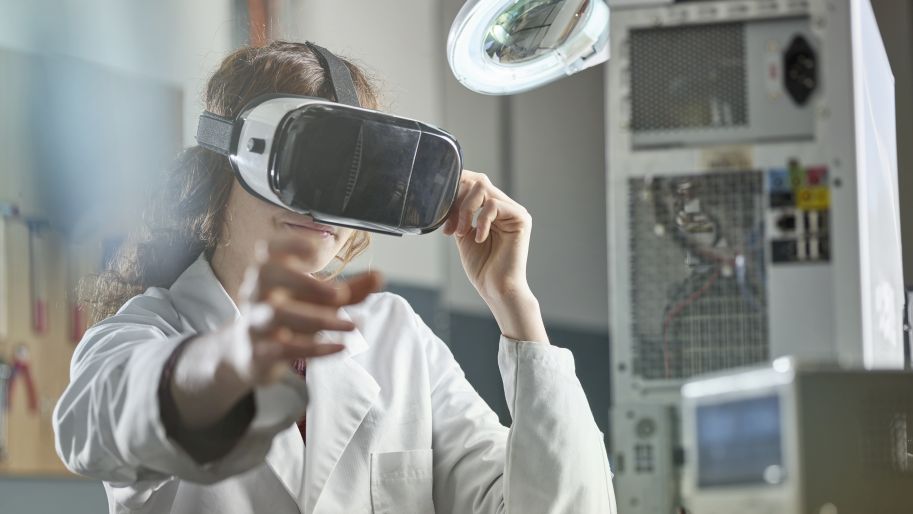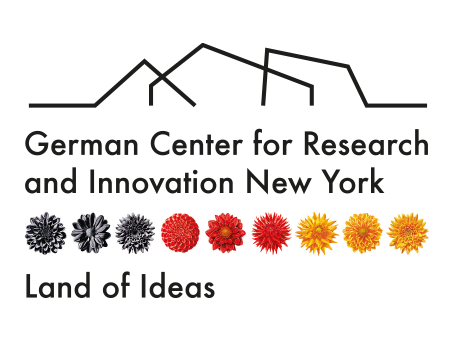How innovative imaging technologies are changing our view of the world of work
 © Westend61 / Getty Images
© Westend61 / Getty Images
An interview with Kathleen Schröter, head of marketing and communication at the Fraunhofer Heinrich Hertz Institute HHI and executive manager of the Innovation Center for Immersive Imaging Technologies Berlin – 3IT
Ms Schröter, you are the manager of the Innovation Center for Immersive Imaging Technologies Berlin, or 3IT for short. What is the current focus of your work?
The use of volumetric video is certainly one of the things we are focusing on. This is as it were the counterpart to 360 degree videos in which cameras film a wide perspective from one central point. With volumetric video, on the other hand, a human being is in the spotlight, with a large number of cameras trained upon the person in question from different angles so that their facial expressions and gestures can be captured. The result is a three-dimensional human body reconstruction. Once linked to artificial intelligence and machine learning systems, this reconstruction can be modified. Where movements such as the raising of the arms were previously recorded on camera, the 3D reconstruction can now be moved accordingly using a joystick. This creates a 3D world in which we are not only viewers but can also take active part. Potential applications include not only the entertainment business, but also medicine for example.
Can you give us some examples of applications for 3D imaging in medicine?
In one of our ongoing projects, we are collaborating with Berlin’s Charité university hospital and Leipzig’s Max Planck Institute for Human Cognitive and Brain Sciences at the Fraunhofer Heinrich Hertz Institute. Our aim is to use volumetric video to create a protected environment in which Parkinson’s, stroke or indeed Alzheimer’s patients can train their coordination and brain activities. Patients gain greater self-confidence and feel more secure if they can practise dealing with everyday situations – in a virtual supermarket, for instance. In the 3DInMed project funded by the Federal Economics Ministry at the 3IT, we are looking at ways to support doctors: using 3D endoscopes and microscopes, images are displayed on a screen during an operation in such a way that they can be seen in three dimensions without the need to wear special 3D glasses. This makes surgery quicker and less risky, allowing for example tumours to be removed more efficiently.

"The 3IT now boasts around 45 partners, all of them innovators in the areas of business and science. Together, we want to show what can be achieved with immersive imaging technologies."Kathleen Schröter, executive manager of the 3IT
What sets the Innovation Center for Immersive Imaging Technologies apart?
The prototype of the first commercial studio for volumetric video on the European mainland was built at the 3IT. We jointly inaugurated Volucap, the company that runs the studio, in June 2018. There are only around five other firms in the world that are working with volumetric video on a comparable level – one being Microsoft. ARRI, a leading film equipment company, is one of the 3IT partners involved in running the studio at Volucap GmbH. The work being done at 3IT is attracting international attention, partly because we are well-connected globally.
Which international networks are you involved in?
We are a member of the Advanced Imaging Society, for example. We regularly take part in specialist trade fairs such as the International Broadcasting Convention (IBC) in Amsterdam and the National Association of Broadcasters (NAB) Show in Las Vegas. I also travel a lot myself: in October 2018 I took part in an event hosted by the German Center for Research and Innovation in New York, entitled “Transatlantic and Interdisciplinary Take on the Future of XR”. This was a particularly inspiring setting in which to present our research. Such events raise Germany’s profile as an important location for innovation.
Do you see yourself as an ambassador for women’s opportunities in the tech world, which is often still dominated by men?
To some extent I do, especially because I originally graduated in economics before switching to this field. Due to the shortage of highly-qualified staff, we need to get as many people as possible interested in technology-related professions and the associated innovations. With its exhibition area, cinema and studio, as well as workshops and educational offerings for different age groups, the 3IT offers many opportunities for this. It is important for us not simply to consume technology and wait passively for the next innovation to come along – we should be as active as possible in helping to shape such innovations.
